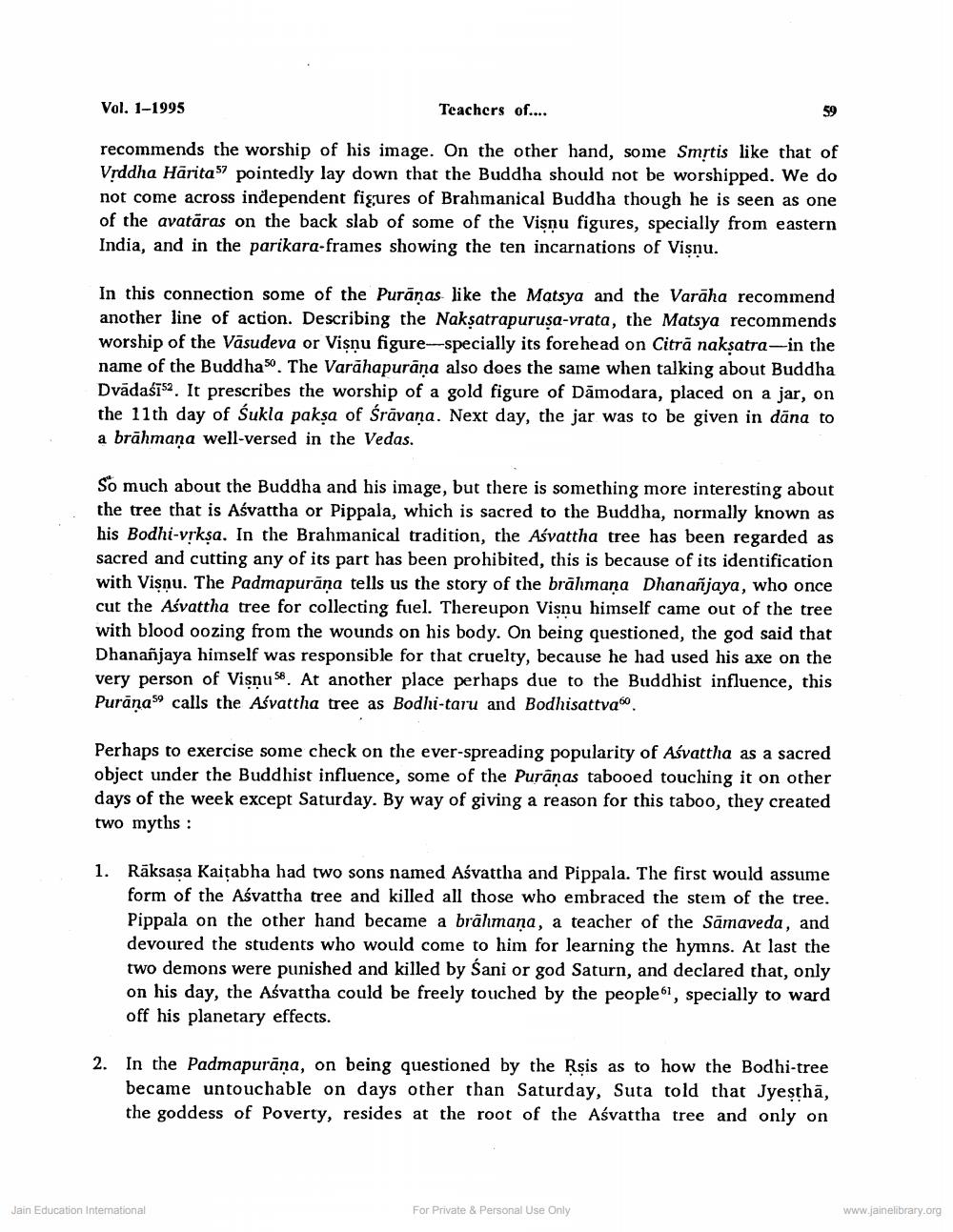________________
Vol. 1-1995
Teachers of....
recommends the worship of his image. On the other hand, some Smrtis like that of Vrddha Hāritapointedly lay down that the Buddha should not be worshipped. We do not come across independent figures of Brahmanical Buddha though he is seen as one of the avatāras on the back slab of some of the Vişnu figures, specially from eastern India, and in the parikara-frames showing the ten incarnations of Visnu.
In this connection some of the Purāņas like the Matsya and the Varāha recommend another line of action. Describing the Naksatrapuruşa-vrata, the Matsya recommends worship of the Vāsudeva or Vişņu figure-specially its forehead on Citrā nakșatra-in the name of the Buddha. The Varahapurana also does the same when talking about Buddha Dvadasī52. It prescribes the worship of a gold figure of Dāmodara, placed on a jar, on the 11th day of śukla pakṣa of Śrāvana. Next day, the jar was to be given in dāna to a brāhmana well-versed in the Vedas.
So much about the Buddha and his image, but there is something more interesting about the tree that is Aśvattha or Pippala, which is sacred to the Buddha, normally known as his Bodhi-vrkșa. In the Brahmanical tradition, the Asvattha tree has been regarded as sacred and cutting any of its part has been prohibited, this is because of its identification with Vişnu. The Padmapurāņa tells us the story of the brāhmaṇa Dhanañjaya, who once cut the Aśvattha tree for collecting fuel. Thereupon Visnu himself came out of the tree with blood oozing from the wounds on his body. On being questioned, the god said that Dhananjaya himself was responsible for that cruelty, because he had used his axe on the very person of Vişnuse. At another place perhaps due to the Buddhist influence, this Purānaso calls the Aśvattha tree as Bodhi-taru and Bodhisattva
Perhaps to exercise some check on the ever-spreading popularity of Aśvattha as a sacred object under the Buddhist influence, some of the Purāņas tabooed touching it on other days of the week except Saturday. By way of giving a reason for this taboo, they created two myths :
1. Räksasa Kaitabha had two sons named Aśvattha and Pippala. The first would assume
form of the Aśvattha tree and killed all those who embraced the stem of the tree. Pippala on the other hand became a brālimana, a teacher of the Sāmaveda, and devoured the students who would come to him for learning the hymns. At last the two demons were punished and killed by Sani or god Saturn, and declared that, only on his day, the Aśvattha could be freely touched by the people, specially to ward off his planetary effects.
In the Padmapurāna, on being questioned by the Rsis as to how the Bodhi-tree became untouchable on days other than Saturday, Suta told that Jyesthā, the goddess of Poverty, resides at the root of the Aśvattha tree and only on
Jain Education International
For Private & Personal Use Only
www.jainelibrary.org




